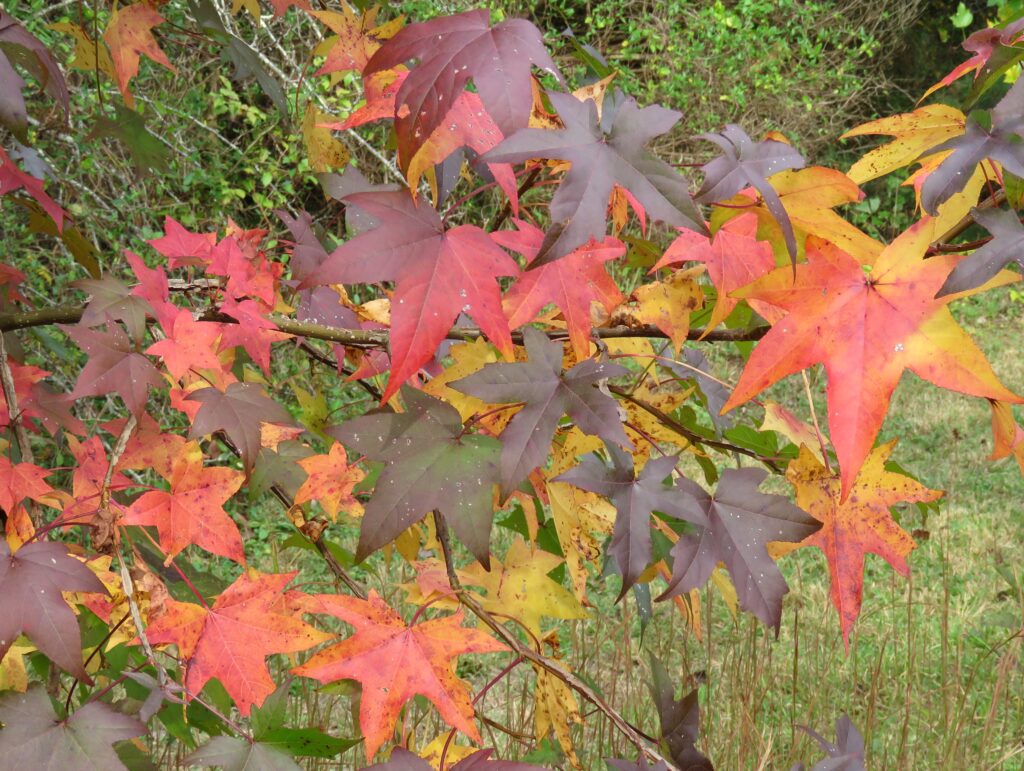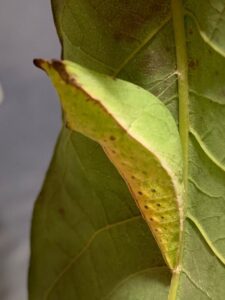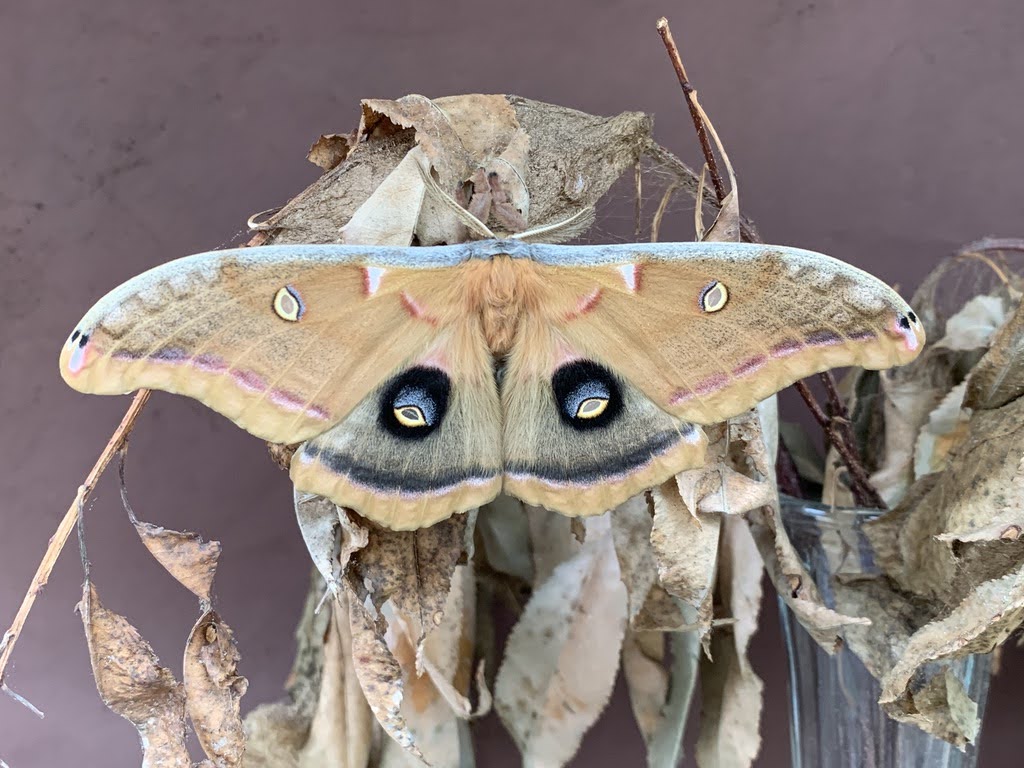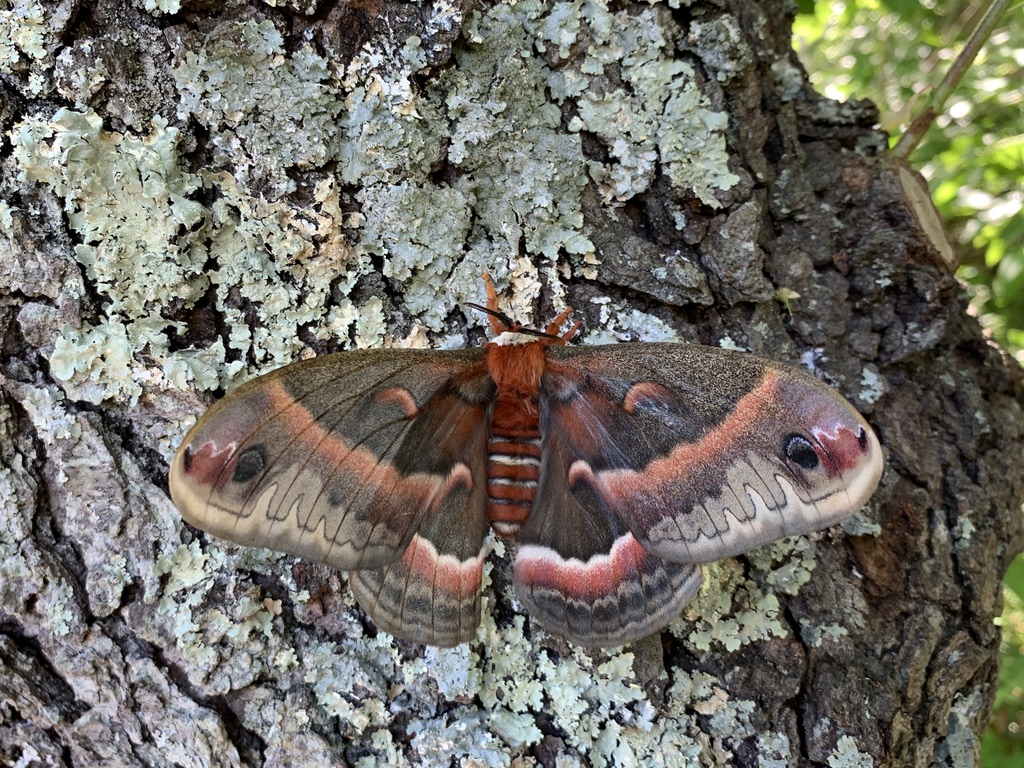
Green leaves of summer are ablaze in scarlet, crimson and gold, as trees and shrubs begin to wind-down for winter. Through photosynthesis, these mini food factories provided an essential service in turning water and carbon dioxide into sugars for their host. But their job duties do not end there. Leaves take on a new role in the winter. These brown leafy blankets protect pupating caterpillars!
Leaves provide important habitat for moths, butterflies and other insects in the winter. A Cecropia Moth caterpillar is tucked safely inside the leaf of a Wild Black Cherry. An Oak leaf protects the pupa of a Prometheus Moth. A Spicebush leaf is host to a Spicebush Swallowtail chrysalis.
Unfortunately, this benefit has been lost on humans, who mow, chip, rake and discard the leaves, and their caterpillars, in an effort to tidy the lawn. Turn over a new leaf and try a fresh approach to landscaping this fall. Rake your leaves into your garden beds, or into “tidy” piles in the corners of your yard. Allow the caterpillars to overwinter, and enjoy the beautiful moths and butterflies in your native flower garden next summer.
Birch, persimmon, willow, beech, alder, tulip poplar, black walnut, ash and sumac are all overwintering host plants for butterfly and moth caterpillars. Plant these trees and shrubs in your yard and create a sanctuary for pupating caterpillars when you leave the leaves.
Learn more about “leaving the leaves” from the Xerces Society of Invertebrate Conservation.



